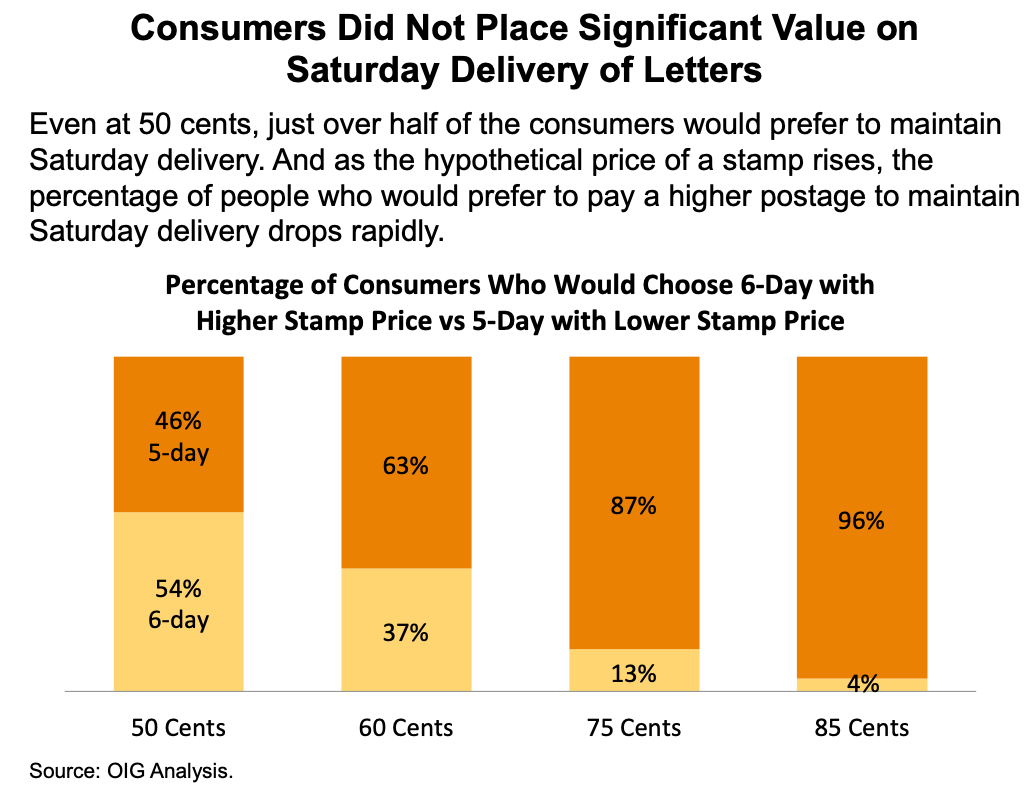The U.S. Postal Service has been hemorrhaging cash, having lost an eye-popping $9.5 billion in fiscal year (FY) 2024. That’s bad, even by postal standards. In fact, it’s the largest net loss since FY 2012! The Postmaster General has been trying to cut costs quite a few ways, ranging from relaxing delivery standards to consolidating facilities to reducing overtime.
There is one obvious cost-cutting idea that doesn’t really get talked about anymore. The USPS delivers six days a week (Monday through Saturday), and thanks to the expansion of its package business, often on Sundays too.
Why not stick to weekday deliveries? Royal Mail over in the U.K. seems to be moving in that direction, at least for non-urgent “Second Class” letter deliveries. Their regulator Ofcom released the following on Jan. 30:
In our latest in-depth research, most postal users said they do not need six days a week delivery for the majority of letters. To ensure the universal service remains sustainable and delivers what people need, we are proposing to allow Royal Mail to deliver Second Class letters on alternate weekdays - still within three working days of collection - but not on Saturdays. We have assessed postal users' needs and provisionally concluded that the proposed new service would continue to meet them. Indeed, only 4% of users think they would be very significantly impacted by the proposed changes. We estimate this change would enable Royal Mail to realise annual net cost savings of between £250m and £425m with successful implementation.
The question is why the U.S. hasn’t reformed along similar lines. The USPS has certainly considered the idea before. Agency leadership suggested a five-day delivery plan (with some wiggle room for Saturday package deliveries) in its “Five-Year Business Plan” in 2013 and concluded that it would save $1.9 billion per year. That’s $2.6 billion after adjusting for inflation, which is about a third of the average USPS annual loss over the past couple of years. In other words, that’s no small chunk of change.
Consumers certainly seemed to be on board. In 2015, the Inspector General surveyed consumers on whether six days of delivery was worth it at various stamp price points. Here’s what it found:
And, now that the price of a first-class stamp is 73 cents and rapidly rising, it’s reasonable to think consumers prefer five days of delivery over six.
If this is such a great idea, it’s natural to wonder why no one talks about it anymore. One big problem is the law. Signed into law in 2022, the Postal Service Reform Act states:
Delivery shall occur at least six days a week, except during weeks that include a Federal holiday, in emergency situations, such as natural disasters, or in geographic areas where the Postal Service has established a policy of delivering mail fewer than six days a week as of the date of enactment of the Postal Service Reform Act of 2022.
This leaves USPS leadership with two choices for bringing about five-day delivery. It could invoke historically terrible finances and drastic manpower shortages to state that this is an “emergency situation” and see what the courts have to say. Or, it could go the more conventional route and try to convince Congress to cut it some slack. Either way, five-day delivery is certainly an idea worth considering for the beleaguered Postal Service.
![Go[ing] Postal](https://substackcdn.com/image/fetch/$s_!lRzt!,w_80,h_80,c_fill,f_auto,q_auto:good,fl_progressive:steep,g_auto/https%3A%2F%2Fsubstack-post-media.s3.amazonaws.com%2Fpublic%2Fimages%2F9e03b0b6-2100-4e6e-b2d7-7c6c009ef6c4_1280x1280.png)

![Go[ing] Postal](https://substackcdn.com/image/fetch/$s_!lRzt!,w_36,h_36,c_fill,f_auto,q_auto:good,fl_progressive:steep,g_auto/https%3A%2F%2Fsubstack-post-media.s3.amazonaws.com%2Fpublic%2Fimages%2F9e03b0b6-2100-4e6e-b2d7-7c6c009ef6c4_1280x1280.png)

